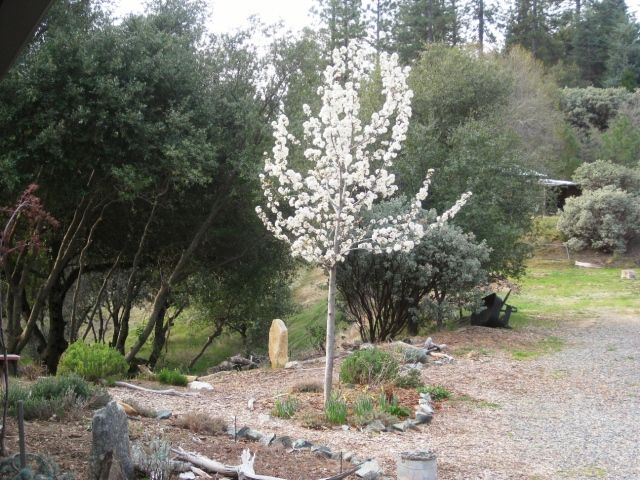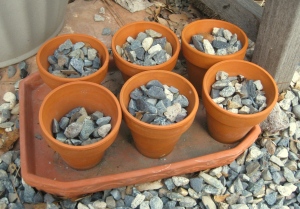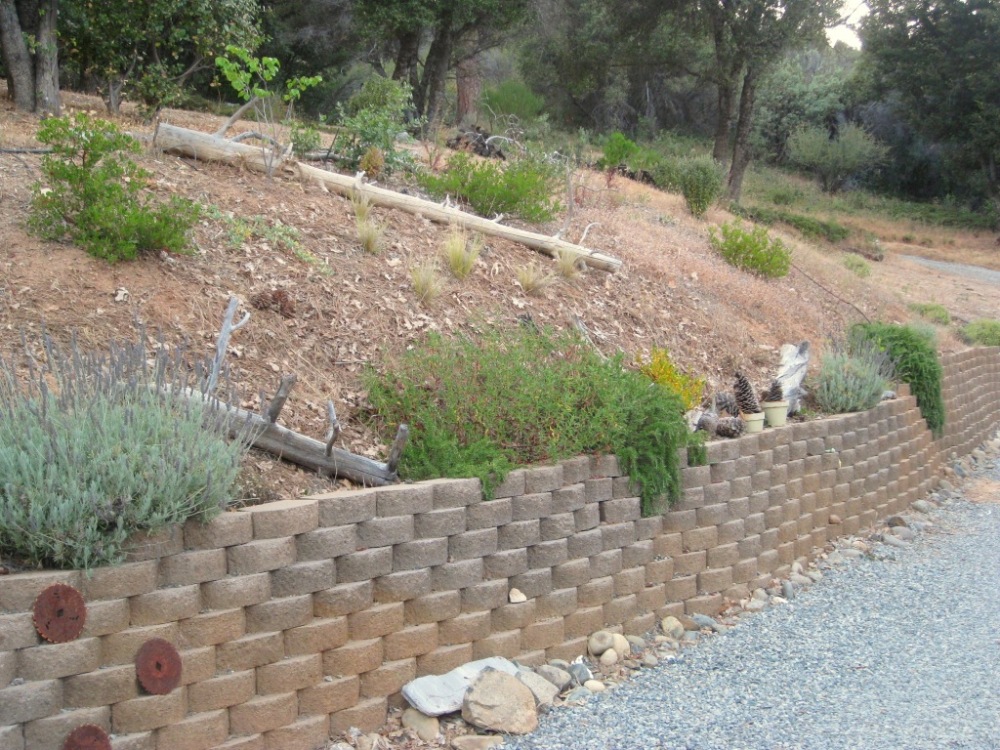Many of us here in the California Sierra foothills have gravel driveways, paths and roads. This can be a help or a hindrance to gardeners searching for more space in which to garden.
Gravel gardens could have their origin in formal Japanese ‘dry landscape’ gardens located on the grounds of Zen Buddhist temples. The raked gravel was intended to limit distraction and give the impression that the landscape could be in any location not only the existing one.
The affection for alpine areas, above the tree line, with their tiny compact plants so loved by alpine and rock garden plant collectors also may have influenced the desirability of constructing gravel gardens.
When we, here in the country, already have a n existing expanse of gravel to deal with, plants can add a softening effect and add color and beauty to your “neutral palette.”
Rock and gravel gardens are once again in style, because they really fit today’s water wise gardening style here in California. Many of us have to limit the water given over to plants in our gardens. Drought resistant plants can cut down on the amount of hand watering done in the garden, too.
All plants suited to growing in gravel, wallflower, euphorbia, teucrium, santolina and redbud. The red is photina grown to be a screen.
The good news is many of the plants suitable for a gravel garden are native and available here in our foothills. Lavender, santolina, agastache, Russian sage, ceanothus, California fuchsia, poppies and yarrow can all be grown wonderfully in a gravel garden. Don’t overlook sedums, grasses and any hardy herbs.
Take note of the heights that the plant are in full-size and plant the taller ones in back of the shorter ones, just like in any area. If your gravel area is your driveway, plants that do not spread horizontally may be what you’ll plan.
Simply pull back the gravel, dig a planting hole the size of your nursery can or root ball, tamp down the soil and replace the gravel which will now act as a mulch. Only amend the soil if your soil is pure clay or pure decomposed granite, both of which have many nutrients already.
Water well as usual and water natives once or twice a week in warm weather and less or none at all in a rainy spring.
Each plant stands out in a gravel garden, making it a showcase feature in your yard. Try raking the gravel around your planting area for a neat, serene look.
Recent Posts
How to Be a Lazy Gardener
...and still have a pretty garden With a busy household and jobs, we are…
Summer is Spring at Whiskey Falls!
Take a day trip to Whiskey Falls... Come visit Whiskey Falls and the surrounding high…
California oak acorns: Feast or famine
Why do oaks drop more acorns some years and not others? If you have live…
Mule’s ear and Farewell to Spring
Roadside treasures worth stopping for In the first week of July in the Sierra foothills…
Our favorite butterfly plants
Wow! Butterflies love these plants! Grow any of these for instant results and each is…
A water-saving veggie garden for the foothills
Your water-wise veggie garden Does everyone in our Mountain Community grow at least one tomato?…



